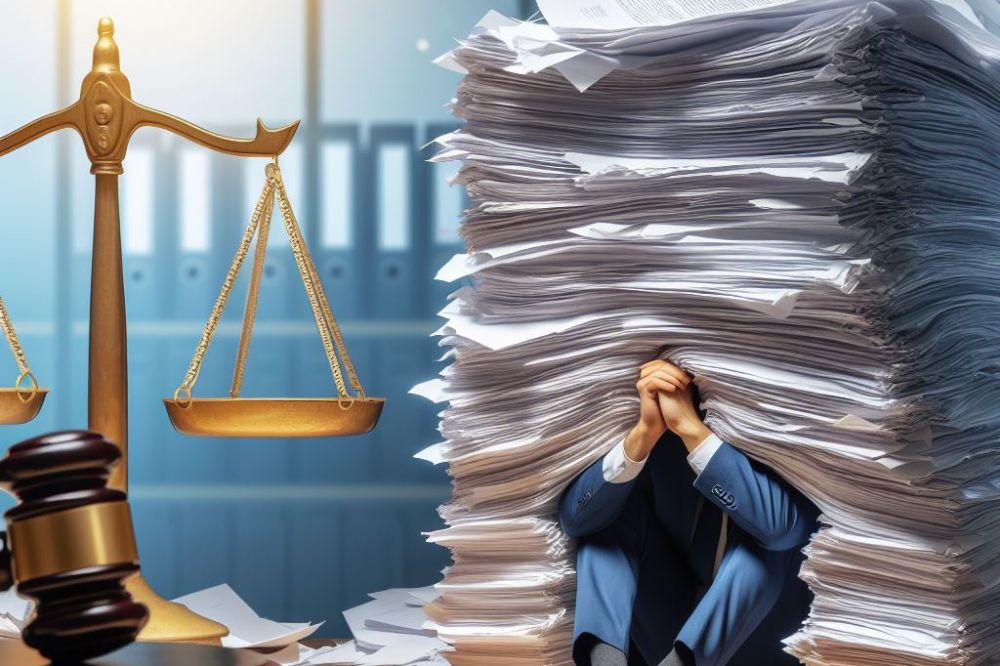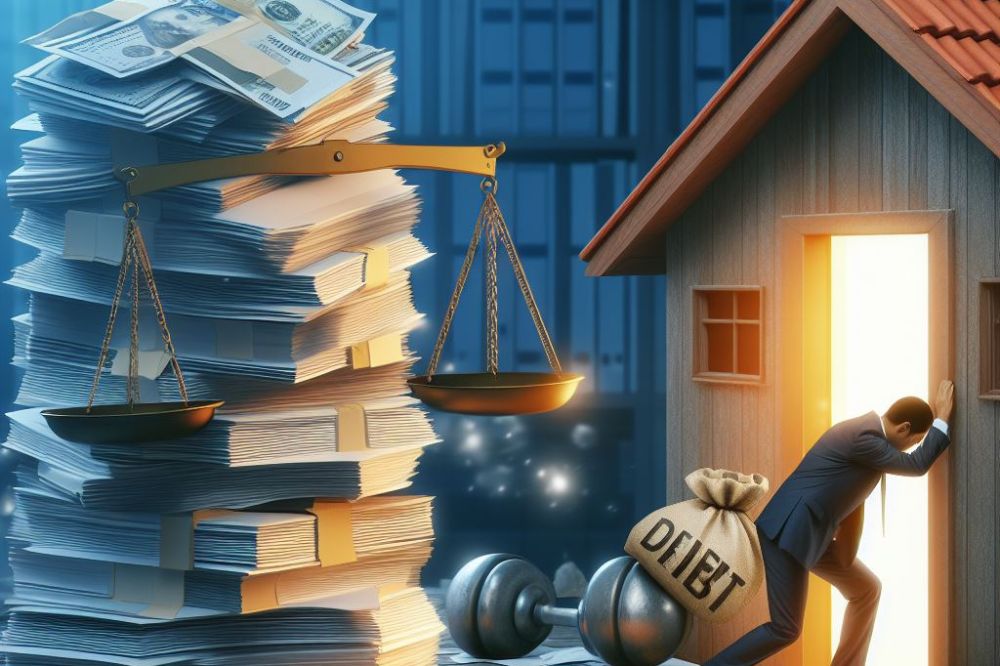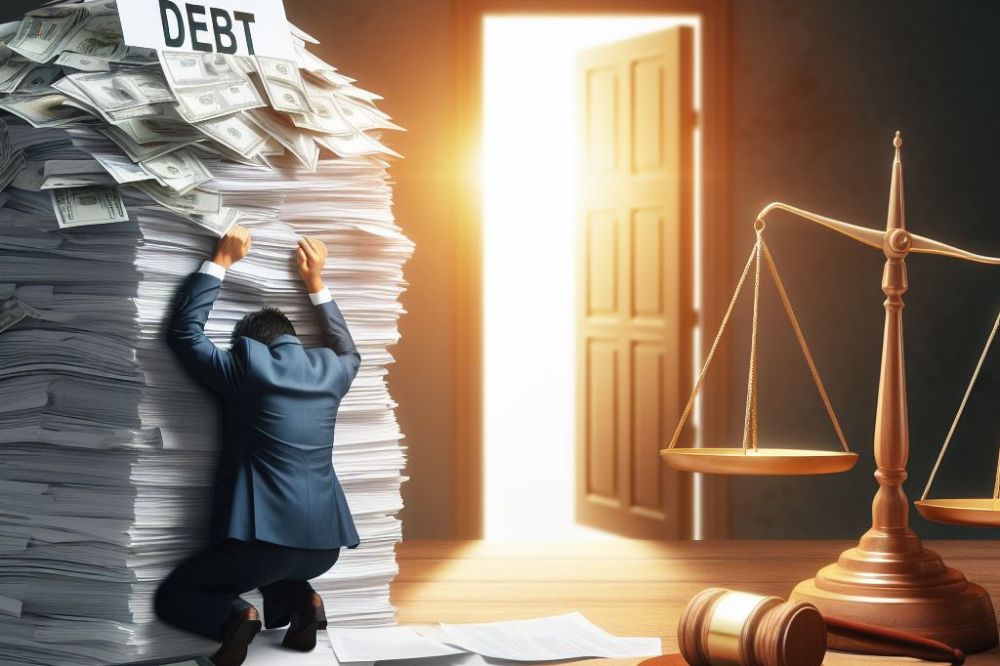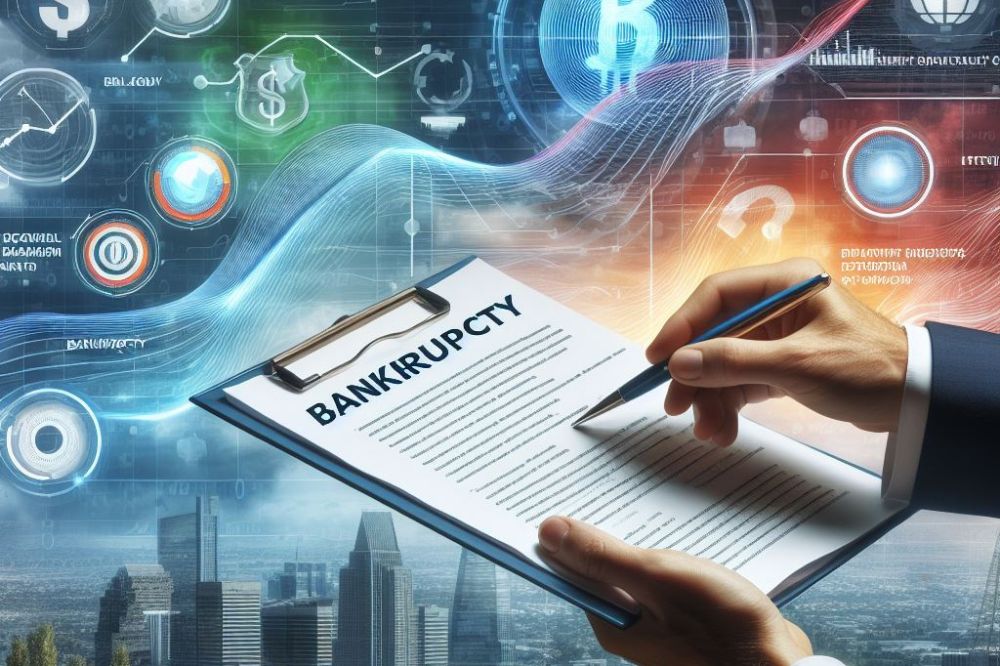- Key Takeaways
- Bankruptcy Explained
- Eligibility Criteria
- Filing for Bankruptcy
- Automatic Stay
- Assets and Exemptions
- The Role of Trustees
- Bankruptcy and Credit Score
- Life After Bankruptcy
- Avoiding Future Bankruptcy
- Closing Thoughts
- Frequently Asked Questions
Curious about the ins and outs of bankruptcy laws? Ever wondered how they could impact your financial future? Delving into understanding bankruptcy laws can provide you with crucial insights to navigate challenging financial situations. Whether it’s deciphering Chapter 7 or Chapter 13, grasping these legalities might be the key to a fresh start. Ready to unravel the complexities and demystify the jargon surrounding bankruptcy regulations? Dive in as we break down the essentials, empowering you with knowledge for informed decisions.
Key Takeaways
- Understanding bankruptcy laws is crucial for individuals facing financial difficulties.
- Eligibility criteria play a significant role in determining who can file for bankruptcy.
- When filing for bankruptcy, it is essential to follow the legal procedures accurately to ensure a smooth process.
- The automatic stay provision helps protect debtors from creditor actions during the bankruptcy process.
- Knowing about assets and exemptions is vital as they impact what you can keep during bankruptcy.
- Trustees play a crucial role in overseeing bankruptcy cases and ensuring compliance with the law.
Bankruptcy Explained
Definition
Bankruptcy is a legal process that helps individuals or businesses overcome overwhelming debt by providing them with a fresh financial start. The purpose of bankruptcy laws is to protect debtors from creditor harassment and ensure fair distribution of assets. There are two main types of bankruptcy: Chapter 7 and Chapter 13.
Types
Chapter 7
Chapter 7 involves the liquidation of assets to pay off debts. Debtors must pass a means test to qualify for Chapter 7, which typically takes about three to six months to complete.
Chapter 13
In Chapter 13 bankruptcy, debtors create a repayment plan to pay back creditors over three to five years. To be eligible for Chapter 13, individuals must have a regular income and unsecured debts below a certain limit. Chapter 13 allows debtors to keep their assets while restructuring their debts, unlike Chapter 7.
Process Overview
The bankruptcy process generally involves several steps, starting with filing a petition in court and attending credit counseling sessions. The bankruptcy court plays a crucial role in overseeing the process, including appointing a trustee to manage the case. Once the process is complete, debtors may receive a discharge of their debts, providing them with a fresh financial start.
Eligibility Criteria
Individual Filing
Individuals can file for bankruptcy under Chapter 7 or Chapter 13, depending on their financial situation. Chapter 7 involves liquidating assets to pay off debts, while Chapter 13 allows for a repayment plan. These options cater to different circumstances.
Distinguishing between individual and business filings is crucial. Individuals typically file under Chapter 7 or Chapter 13, focusing on personal debts. In contrast, businesses may opt for Chapter 11, emphasizing reorganization and debt repayment.
Bankruptcy can have a significant impact on personal assets. Assets such as homes, vehicles, and savings may be subject to liquidation to settle debts. Understanding the implications on personal belongings is essential before filing.
Business Filing
Businesses facing financial distress can consider various bankruptcy options. Chapter 7 involves liquidation of assets to repay creditors, while Chapter 11 focuses on restructuring and continuing operations under court supervision.
The implications of business bankruptcy are multifaceted. Creditors may receive partial repayment based on the available assets, impacting future business relationships. The company’s reputation and market standing could suffer.
The restructuring process for businesses undergoing bankruptcy entails developing a plan to reorganize finances and operations. This process aims to address debt obligations while allowing the business to continue operating effectively.
Filing for Bankruptcy
Required Documents
To file for bankruptcy, essential documents include income statements, tax returns, and a list of assets and debts. These documents are crucial for assessing one’s financial situation accurately. Organizing these papers beforehand can streamline the filing process.
When filing for bankruptcy, these documents are necessary to provide a comprehensive overview of the individual’s financial status. Income statements help determine eligibility criteria, while asset and debt lists aid in evaluating the need for liquidation or reorganization.
For organizing and preparing the required paperwork, individuals should create a checklist of all necessary documents, categorize them accordingly, and keep them in a secure folder. Maintaining an organized system can prevent delays and ensure a smooth filing process.

Filing Steps
The first step in filing for bankruptcy involves submitting a petition to the court that details one’s financial status. This initiates bankruptcy proceedings and marks the beginning of the legal process. Accuracy in this step is crucial to avoid delays or complications during the case.
Following the petition submission, individuals must attend a meeting with creditors where they discuss their financial situation under oath. Transparency during this meeting is vital as it influences decisions regarding debt discharge or repayment plans.
During the filing process, individuals must avoid common pitfalls such as hiding assets, providing false information, or failing to disclose all debts accurately. These mistakes can lead to legal consequences and jeopardize the success of the bankruptcy case.
Automatic Stay
Meaning
Declaring bankruptcy initiates an automatic stay, halting all collection actions by creditors against the debtor. This crucial legal provision provides immediate relief and protection to individuals in financial distress. Under state law, this stay prevents creditors from pursuing lawsuits, garnishing wages, or seizing assets.
Bankruptcy carries significant legal implications for both debtors and creditors. For debtors, it offers a chance to reorganize their finances and gain a fresh start financially. Creditors, on the other hand, must adhere to the automatic stay and bankruptcy proceedings outlined in state law.

Implications
Filing for bankruptcy has profound consequences that extend beyond just financial matters. While it can provide relief from overwhelming debt burdens, it also comes with drawbacks. Bankruptcy can negatively impact credit scores and make it challenging to secure loans or credit in the future.
- Pros:
- Provides a fresh financial start for debtors.
- Stops creditor harassment and collection efforts.
- Cons:
- Adversely affects credit scores.
- May require surrendering assets for liquidation.
Understanding the implications of bankruptcy is essential for individuals considering this option as a solution to their financial struggles. By comprehending how state laws govern bankruptcy proceedings, debtors and creditors can navigate these challenging situations more effectively.
Assets and Exemptions
Protected Assets
Protected assets in bankruptcy typically include essential items like clothing, furniture, and a primary residence.
Exempt property refers to assets that are safeguarded from being seized by creditors during bankruptcy proceedings.
The protection of assets varies depending on the specific bankruptcy chapter filed by the individual or business.
Non-Exempt Assets
Assets that may not be protected in bankruptcy encompass luxury items such as expensive jewelry, second homes, or valuable collections.
During bankruptcy, non-exempt assets are usually sold by the trustee to repay creditors and satisfy debts.
To address non-exempt assets, individuals can consider negotiation with creditors or exploring debt repayment plans.
The Role of Trustees
Responsibilities
Debtors must adhere to all court orders and provide accurate financial information during bankruptcy proceedings. Creditors have the right to participate in meetings and object to the debtor’s actions. Fulfilling responsibilities ensures a smooth bankruptcy process for all involved parties.
Asset Management
To protect assets, debtors should disclose all properties and income sources accurately. Safeguard valuable assets by consulting with legal professionals and exploring exemption options. Proper asset management is crucial for a successful outcome in bankruptcy cases.
Bankruptcy and Credit Score
Immediate Impact
Filing for bankruptcy immediately affects your credit score, leading to a significant drop in the numbers. This decline results from the inclusion of the bankruptcy on your credit report. Creditors will be notified of your bankruptcy filing, impacting their ability to collect debts. The automatic stay that comes with bankruptcy provides immediate relief by halting all debt collection activities, including calls and letters from creditors.
Long-Term Effects
Bankruptcy has long-term implications on your credit profile, staying on your credit report for several years. This negative mark can hinder your ability to secure loans or credit cards in the future. When considering financial decisions post-bankruptcy, lenders may view you as a higher risk borrower. To rebuild your credit after bankruptcy, focus on timely payments, keeping low balances, and applying for a secured credit card to demonstrate responsible financial behavior.
Life After Bankruptcy
Rebuilding Credit
Rebuilding credit after bankruptcy is crucial for financial recovery. Start by obtaining a secured credit card, making timely payments to demonstrate financial responsibility. Consider becoming an authorized user on someone else’s credit card to boost your credit score.
Establishing positive credit habits is key in the post-bankruptcy phase. Focus on paying bills on time, keeping credit utilization low, and avoiding new debts. By maintaining these habits consistently, you can gradually improve your credit score over time.
Monitoring your credit progress is essential for tracking improvements. Utilize free services like Credit Karma or AnnualCreditReport.com to keep tabs on your credit report regularly. Reviewing your report allows you to identify any errors and address them promptly.
Financial Management
Effective financial management plays a vital role in preventing future bankruptcies. Create a realistic budget that outlines your income and expenses to avoid overspending. Prioritize essential expenses like housing, utilities, and groceries before allocating funds to discretionary items.
Saving money regularly is crucial for building a financial safety net post-bankruptcy. Aim to save a portion of your income each month, even if it’s a small amount. Over time, these savings can grow and provide a cushion for unexpected expenses or emergencies.
Seeking financial counseling can offer valuable guidance and support as you navigate post-bankruptcy life. Counselors can help you create a personalized financial plan, set achievable goals, and provide strategies for improving your financial situation. Consider reaching out to non-profit organizations or accredited counselors for assistance.
Avoiding Future Bankruptcy
Budgeting Tips
Creating a realistic budget is crucial to avoid future financial struggles. Start by outlining your monthly income and expenses. Utilize budgeting tools like spreadsheets or apps to track your finances effectively.
To prevent overspending, allocate specific amounts for necessities such as rent, groceries, and bills. Set aside a portion of your income for savings and emergencies. Regularly review your budget to make necessary adjustments.
Effective budget management involves staying disciplined with your spending habits. Avoid unnecessary purchases and prioritize saving for long-term financial stability. Seek guidance from financial advisors if needed.
Debt Management
Understanding the difference between debt management and bankruptcy is essential. Debt management focuses on repaying debts through structured plans, while bankruptcy involves legal processes to resolve overwhelming debts.
When facing debt issues, consider alternative options such as debt consolidation or credit counseling. These approaches can help restructure debts and create manageable repayment plans.
Negotiating with creditors is a valuable skill in debt management. Communicate openly about your financial situation and explore options for reduced interest rates or extended payment terms.
Closing Thoughts
Now that you understand bankruptcy laws, you can navigate the process with confidence. Remember, eligibility criteria are crucial, so ensure you meet them before filing. The automatic stay can provide immediate relief, protecting your assets during proceedings. Understanding the role of trustees is vital for a successful bankruptcy journey. Moreover, rebuilding your credit score post-bankruptcy is achievable with the right strategies. Life after bankruptcy offers a fresh start; focus on financial literacy to avoid future pitfalls.
Take charge of your financial future by applying this knowledge wisely. Seek professional advice if needed and stay informed about your rights and responsibilities throughout the bankruptcy process. Remember, proactive steps now can lead to a brighter tomorrow.
Frequently Asked Questions
What is bankruptcy and how does it work?
Bankruptcy is a legal process where individuals or businesses unable to repay debts seek relief from some or all of their obligations. It involves a court-supervised plan to help debtors eliminate or repay their debts under the protection of bankruptcy laws.
Who can file for bankruptcy?
Individuals, partnerships, and corporations can file for bankruptcy if they are struggling to meet their financial obligations. However, eligibility criteria vary based on the type of bankruptcy being filed, such as Chapter 7 or Chapter 13.
How does filing for bankruptcy affect my credit score?
Filing for bankruptcy can have a significant impact on your credit score. It may initially decrease your score but could also provide a fresh start to rebuild your credit over time by showing responsible financial behavior post-bankruptcy.
What is an automatic stay in bankruptcy?
An automatic stay is a powerful provision that goes into effect immediately upon filing for bankruptcy. It halts most collection actions by creditors, including lawsuits, wage garnishments, foreclosure proceedings, and debt collection calls.
What are exempt assets in bankruptcy?
Exempt assets are possessions or properties that are safeguarded from being liquidated to repay debts during the bankruptcy process. These assets typically include necessities like clothing, household goods, certain equity in a home or car, retirement accounts, and more.




